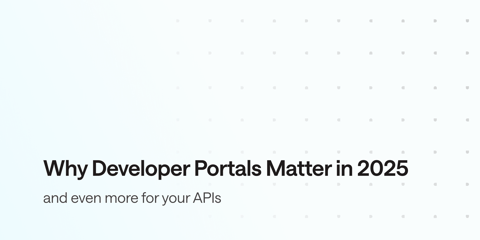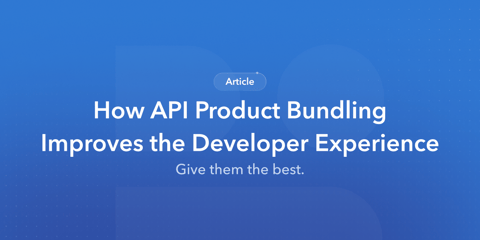API management has grown over the last decade. From cloud to independent APIM vendors, organizations have a variety of options for managing, monitoring, and securing their APIs. In many cases, organizations have more than one APIM vendor. This multitude of choices, while beneficial, also introduces complexity, particularly when it comes to the integration and management of developer portals.
A gateway agnostic developer portal, which operates independently of any specific API gateway, offers a compelling solution to these challenges. They help to unify API documentation into a single location. It also encourages more comprehensive documentation, including getting started guides and how-to posts to supplement reference documentation using the OpenAPI Specification.
This article explores how such a portal can significantly alter API documentation workflows, governance, and consumer onboarding, mitigating the risks of vendor lock-in and enhancing your API strategy.
Understanding Vendor Lock-in and Its Impacts
Vendor lock-in occurs when a customer becomes dependent on a vendor for products and services, unable to easily switch to another vendor without substantial costs or inconvenience. In the context of API management, this is often seen when APIs are tightly coupled with specific gateways or platforms provided by vendors. Such a scenario limits the flexibility of API providers in several ways:
- Technological Dependency: The API lifecycle—design, deploy, manage, and retire—is constrained by the capabilities and evolution of the chosen gateway.
- Cost Implications: Switching costs, including migration and retraining, can be prohibitively high. This increases when API consumers exist outside the organization, perhaps with customers and partners.
- Innovation Stifling: Dependence on a single vendor’s roadmap and update cycle may delay or restrict access to new features and technologies that could benefit the API ecosystem. This is often the case for vendors that delivered a minimal developer portal capability without fully understanding the needs of API providers and consumers.
The Shift to Gateway Agnostic Developer Portals
A gateway agnostic developer portal offers a unified interface where developers can access, test, and integrate with APIs regardless of the underlying API gateway technology. This approach provides numerous advantages:
- Flexibility and Choice: Organizations can choose or switch gateways based on performance, features, and costs without affecting the developer experience or needing to overhaul the portal.
- Consolidated Documentation: Maintaining a single, consistent set of API documentation that is not tied to the specifics of any one gateway simplifies updates and ensures accuracy across all API offerings.
- Uniform Governance: Establishing governance practices that are independent of the gateway allows for consistent policy enforcement, security protocols, and monitoring across all APIs.
- Unified Developer Experience: By unifying all API documentation into a single location, developers are able to find what they need in one place. This reduces the learning curve and provides an overall better developer experience.
Deep Diving into Gateway Agnostic Portals’ Benefits
Let’s look at some of the benefits of choosing a gateway agnostic developer portal.
Enhanced API Documentation Workflow
In a gateway-specific scenario, API documentation often needs to be duplicated or fragmented across different portals, each tailored to a specific technology stack. This not only complicates the documentation process but also leads to inconsistencies that can confuse developers and hinder API adoption.
A gateway agnostic portal centralizes documentation, providing a single source of truth for API consumers. It supports automated documentation generation and synchronization across different API gateways, ensuring that all information is accurate and up-to-date. This reduces the administrative overhead and enhances the developer experience by providing clear, consistent, and comprehensive API information.
Improved API Governance and Regulatory Compliance
API governance encompasses the rules and standards that ensure secure, consistent, and effective API operations across an organization. A gateway agnostic portal facilitates centralized governance by abstracting these rules from the specifics of any single gateway. This abstraction allows for the implementation of uniform policies regarding security, rate limiting, and access control, which apply universally regardless of the underlying gateway(s) used.
Moreover, it simplifies compliance with regulatory requirements such as GDPR or HIPAA by standardizing the enforcement mechanisms across all APIs, reducing the risk of breaches due to inconsistent policy application.
Streamlined Consumer Onboarding Experience
The onboarding of new developers is a critical aspect of API strategy, directly impacting the speed and ease with which external parties can begin using APIs. A gateway agnostic developer portal simplifies this process by providing a consistent, intuitive interface that remains the same regardless of the backend changes in API management infrastructures. This consistency accelerates developer training and reduces learning curves, leading to quicker and more effective API adoption.
Developer experience is also improved across the full API lifecycle, as developers benefit from a single location to discover all available APIs with a global search across all documentation to reduce the learning curve. In addition, features like interactive API consoles and integrated testing tools that work across different gateways, enhancing their ability to understand and use APIs efficiently.
Challenges and Considerations
While the benefits are significant, the transition to a gateway agnostic developer portal is not without challenges. Technical and operational considerations include:
- Integration Complexity: Linking multiple API gateways with a single portal can be technically challenging, requiring sophisticated middleware or custom development to ensure a smooth experience for both API producers and consumers.
- Cost of Transition: Initial setup, integration, and potential migration costs must be weighed against the long-term benefits of flexibility and reduced lock-in.
- Developer Education and Training: Time and training will be required to make developers comfortable with the new workflows involved in a gateway agnostic developer portal. Be sure to invest time in educating teams on the new workflows and the value it provides over any existing solutions already in place.
Conclusion
The movement towards gateway agnostic developer portals represents a strategic evolution in API management, one that prioritizes flexibility, scalability, and developer engagement. By decoupling the developer experience from specific API gateways, organizations can avoid vendor lock-in, streamline their API documentation workflows, enforce consistent governance, and provide a superior onboarding experience for API consumers. This approach not only future-proofs API strategies but also aligns with the broader trends of digital transformation and cloud-agnostic.
You can learn more about how to improve your API contracts in our series of guides. When you are ready, we can help you manage your OpenAPI and AsyncAPI documents as a source of truth, publish them into a unified portal, add additional documentation to support developers throughout the API lifecycle - all in a unified developer portal solution. Signup for free for 15 days to give it a try.


